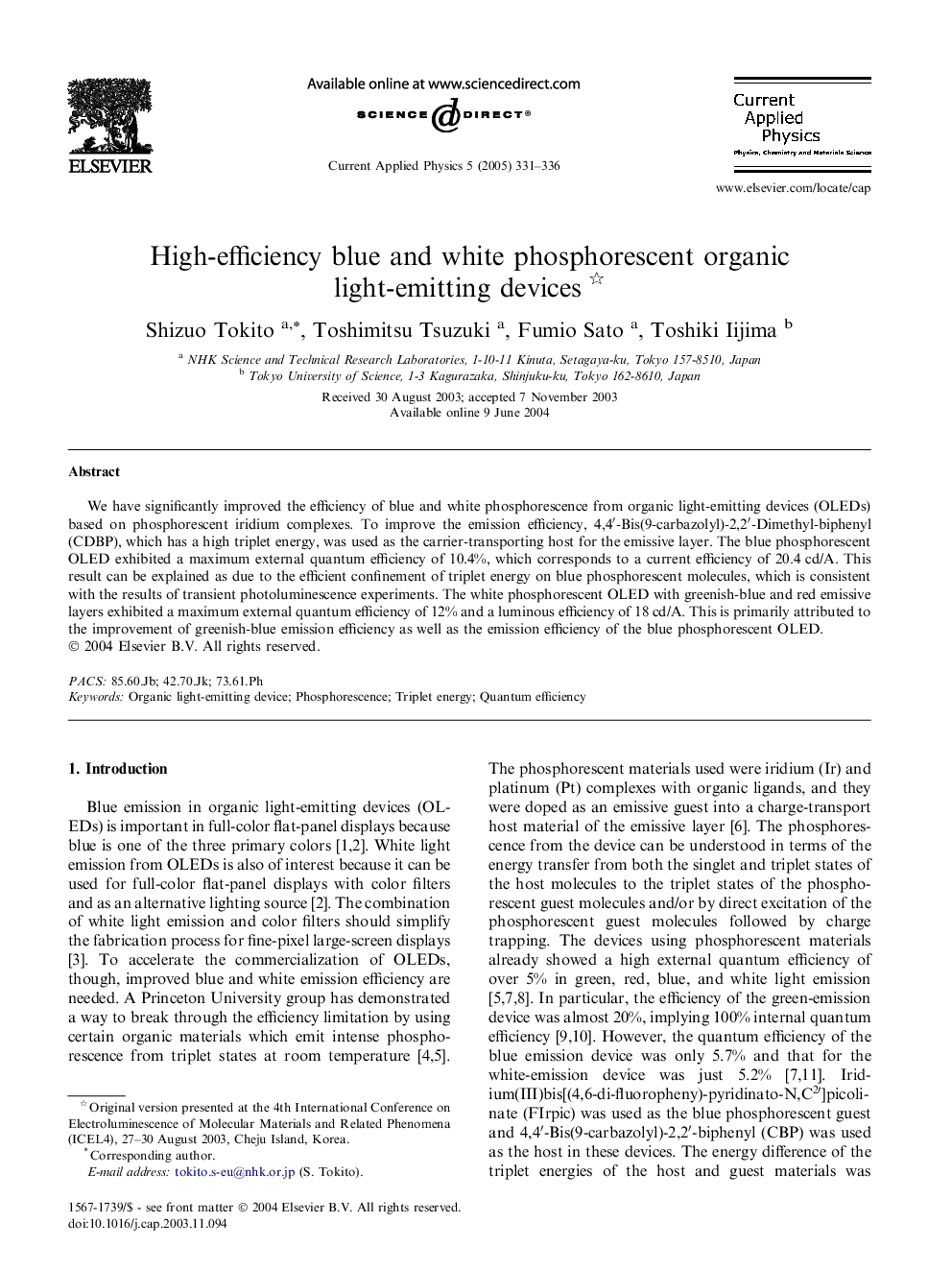| Article ID | Journal | Published Year | Pages | File Type |
|---|---|---|---|---|
| 10706829 | Current Applied Physics | 2005 | 6 Pages |
Abstract
We have significantly improved the efficiency of blue and white phosphorescence from organic light-emitting devices (OLEDs) based on phosphorescent iridium complexes. To improve the emission efficiency, 4,4â²-Bis(9-carbazolyl)-2,2â²-Dimethyl-biphenyl (CDBP), which has a high triplet energy, was used as the carrier-transporting host for the emissive layer. The blue phosphorescent OLED exhibited a maximum external quantum efficiency of 10.4%, which corresponds to a current efficiency of 20.4 cd/A. This result can be explained as due to the efficient confinement of triplet energy on blue phosphorescent molecules, which is consistent with the results of transient photoluminescence experiments. The white phosphorescent OLED with greenish-blue and red emissive layers exhibited a maximum external quantum efficiency of 12% and a luminous efficiency of 18 cd/A. This is primarily attributed to the improvement of greenish-blue emission efficiency as well as the emission efficiency of the blue phosphorescent OLED.
Keywords
Related Topics
Physical Sciences and Engineering
Physics and Astronomy
Condensed Matter Physics
Authors
Shizuo Tokito, Toshimitsu Tsuzuki, Fumio Sato, Toshiki Iijima,
